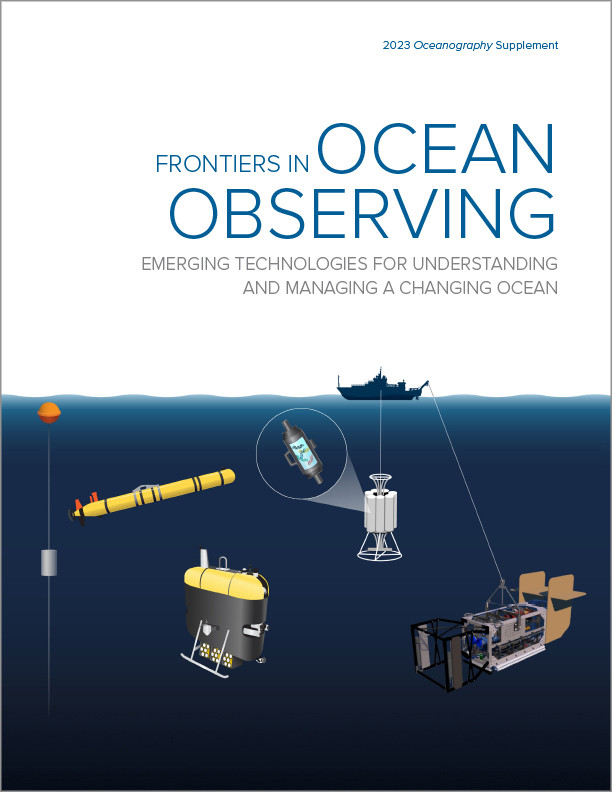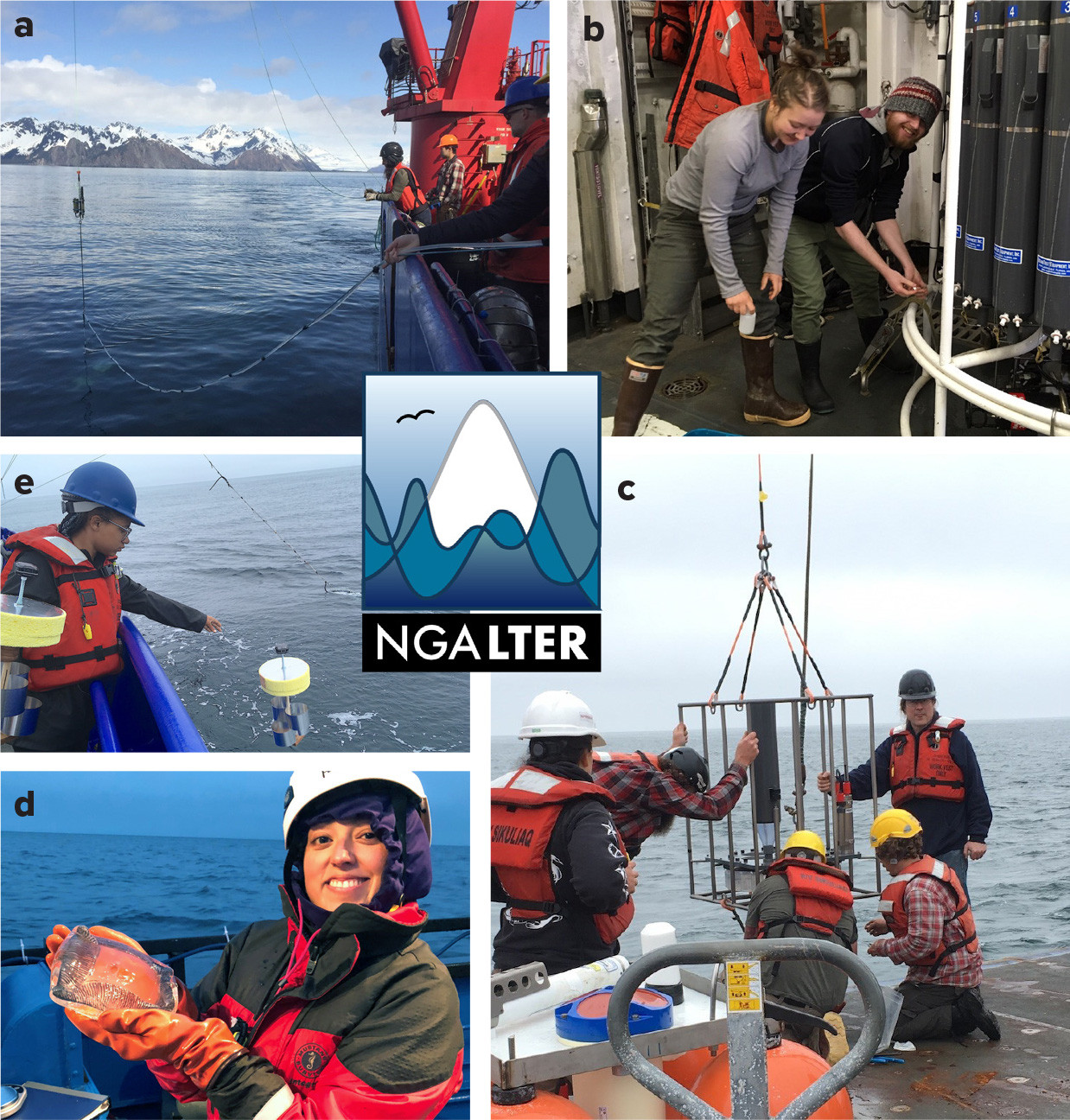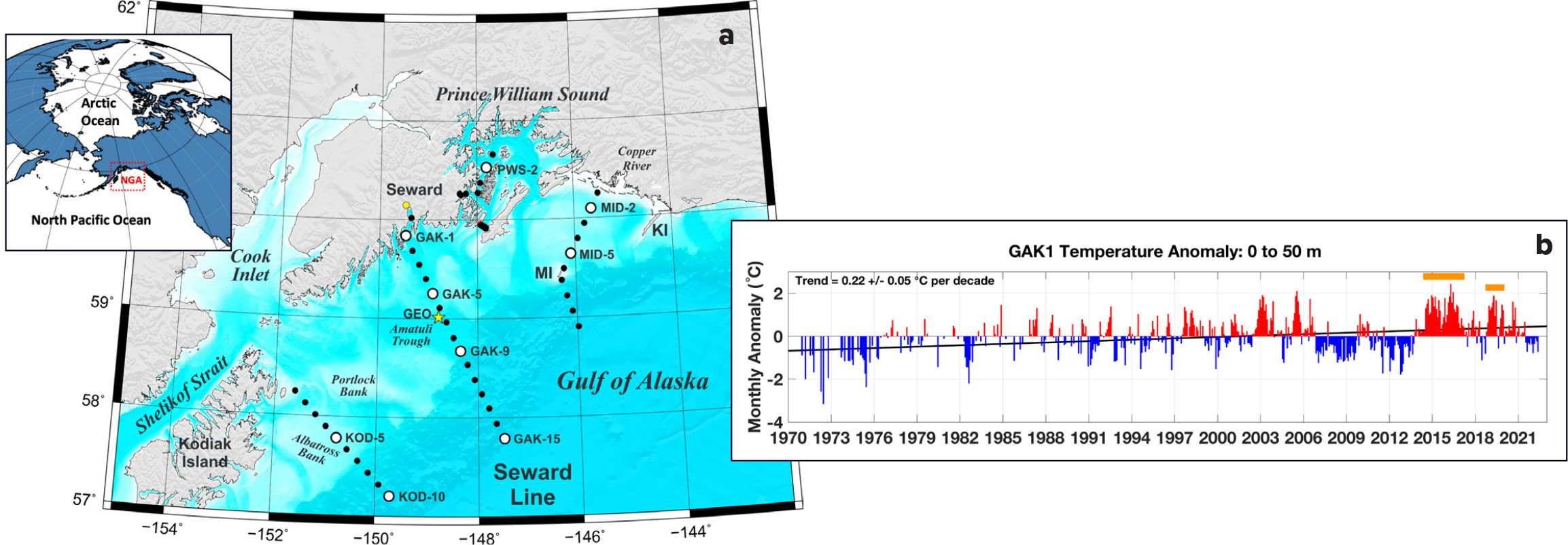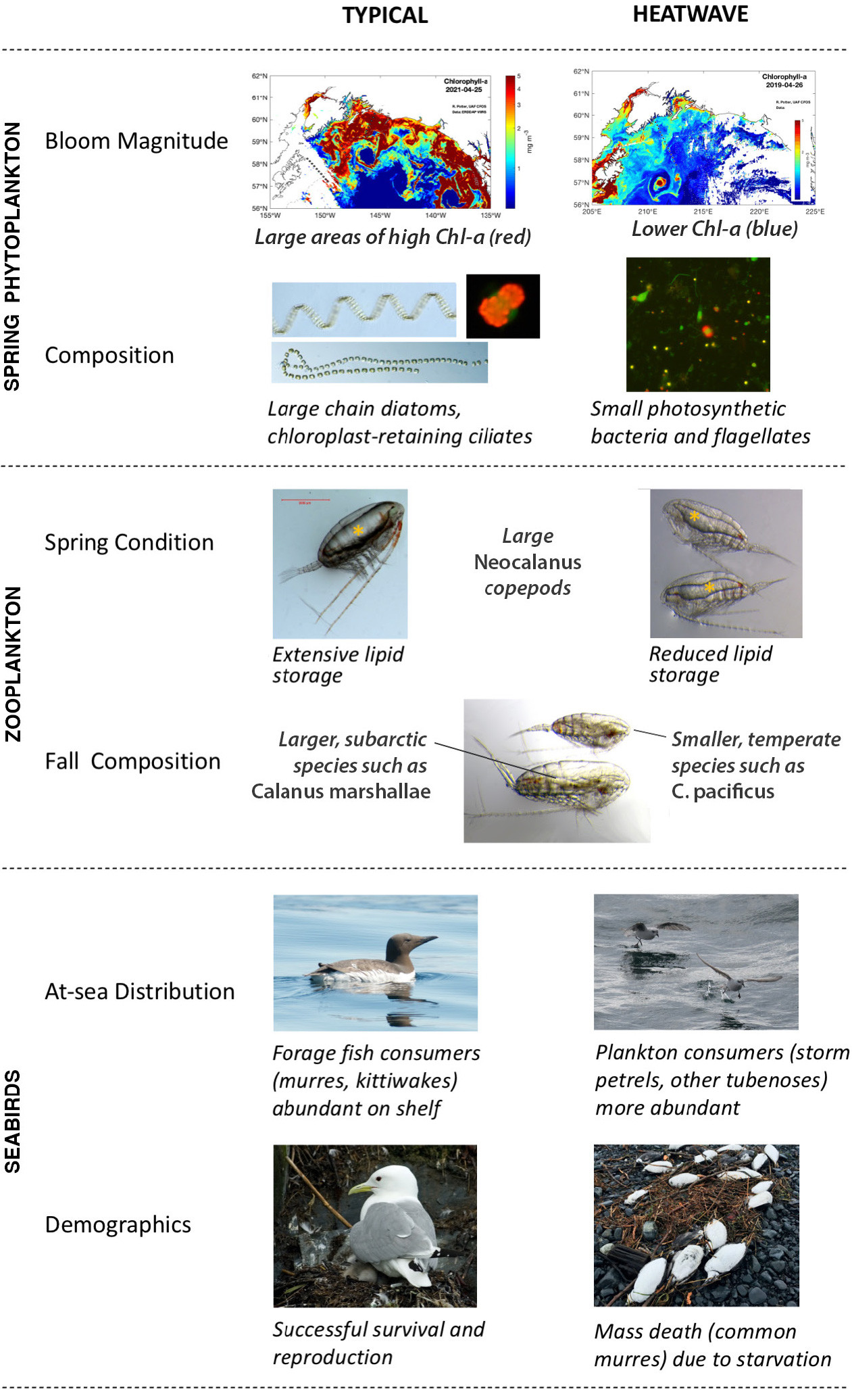Full Text
Introduction
Several decades of research and monitoring in the northern Gulf of Alaska (NGA) have revealed climate-related shifts in ocean temperature and salinity. Accompanying these shifts have been changes in the abundance and diversity of species, from single-celled plankton to fish, seabirds, and marine mammals. Research is documenting long-term change in the region and revealing the mechanisms by which recent marine heatwaves affect the ability of higher trophic levels to survive in these waters. Heatwaves in the northern Gulf of Alaska are likely to become longer, more frequent, and more intense, making long-term monitoring of ecosystem changes critical to understanding and predicting effects on valuable commercial fisheries and culturally significant native harvesting. In addition, documentation of change is necessary for projecting regional and global future climate scenarios and for informing climate-related policy decisions.
Our multi-decade NGA program (Figure 1) encompasses physics, chemistry, plankton ecology, and seabirds, and links closely to larval and adult fish surveys conducted by NOAA’s Alaska Fisheries Science Center. Our program has three primary research goals: (1) document long-term (multi-decadal) change in environmental properties and ecosystem structure, (2) describe ecosystem shifts engendered by disturbance events such as marine heatwaves, and (3) understand the processes by which ecosystem shifts relate to environmental forcing and influence species (including harvestable resources) at higher trophic levels.
|
|
Background
The region’s subarctic latitude and the passage of frequent energetic storms result in an NGA climate that is strongly seasonal and dynamic. Freshwater inputs from rain as well as the snowfields and glaciers that clothe the coastal mountain ranges (Figure 1) heavily influence oceanographic processes. The time- and space-varying intersection of iron-rich, lower salinity coastal waters and iron-limited offshore waters creates a mosaic of community types and productivity regimes. In addition, episodic zones of high production are formed by strong tidal currents interacting with rugged bathymetry, frontal zones associated with alongshore currents and river plumes, and mesoscale eddies that transit the region. Such complexity creates a variety of habitats, increasing system-wide biodiversity across communities from microbes to seabirds and marine mammals. The NGA hosts societally and commercially important fisheries, including finfish (e.g., salmon, pollock, Pacific and black cod) and shellfish (e.g., shrimp, crabs). Accordingly, the relationships among climate, environment, ecosystem-wide species composition, and production are of interest to fishers and management agencies as much as to oceanographers and ecologists.
Regular NGA observation began in 1970 with water column temperature and salinity profiles at a nearshore station (Figure 2). Biological and chemical observations, including nutrients, phytoplankton, zooplankton, and seabirds, commenced in the late 1990s when the program expanded to include a cross-shelf transect (the Seward Line) extending offshore into oceanic waters. In 2018, the NGA was added to the National Science Foundation’s Long-Term Ecosystem Research (LTER) network, an exciting development that enlarges the scope of our observations and increases the potential for ecological insights through comparisons with a variety of ecosystems (https://nga.lternet.edu). The NGA LTER strives for inclusivity at all levels. To this end, we are actively implementing diversity, equity, and inclusion initiatives, including partnering with Alaska Native communities. Increasing the diversity of participants in science influences the range of questions asked and the interpretation of the data collected, and leads to more innovative outcomes (Phillips, 2014).
|
|
Methods
We use a range of approaches to study the NGA, including at-sea sampling; remote observations from moorings, gliders, and satellites; and biophysical modeling. Sampling at sea occurs three times annually (spring, summer, and fall) for ocean physics, carbon cycle parameters including export flux and macro- and micronutrients, lower trophic level production rates and communities, and seabirds. Longer cruises allow for hypothesis testing through shipboard experiments (e.g., iron enrichment). These at-sea observations have been crucial for documenting ecosystem responses to recent marine heatwaves, as they allow detailed examination of community composition shifts and provide ground truth for models that project the effects of future warming.
Findings
As in many biomes worldwide, there is long-term warming in the NGA (Danielson et al., 2022) as well as increased freshening of surface waters (Figure 2). Together, these trends have increased water column stratification. Two recent marine heatwaves (2014–2016 and 2019) tested the resilience of the ecosystem (Litzow et al., 2020; Suryan et al., 2021). Heatwave effects observed by our program include a reduced spring bloom (normally the greatest primary production pulse of the year) and shifts to smaller organisms at both the phytoplankton and microzooplankton trophic levels in spring (Figure 3). This had consequences for the dominant taxa of large-bodied copepods, whose spring lipid storage (which fuels fall-winter survival and reproduction) was reduced and/or required a longer duration of surface feeding. Euphausiids (krill) decreased drastically, and other programs reported similar declines for forage fish such as capelin, sand lance, and herring (Arimitsu et al., 2021).
|
|
In contrast, warmer conditions enhanced the survival of southern zooplankton species (including copepods and pyrosomes) that are transported into our region by the Alaska Gyre current system, so fall biodiversity increased at the mesozooplankton trophic level. Seabird responses also revealed “winners” and “losers.” There was a huge die-off of common murres, normally one of the most abundant NGA species, in association with the 2015–2016 warm period, likely due to loss of their euphausiid and forage fish prey (Piatt et al., 2020). However, the abundance of planktivorous taxa such as kittiwakes and storm petrels increased over the mid and outer shelf (Cushing et al., in press). The altered food web conditions reduced finfish reproductive success and led to poor body condition in adults of many species. Subsequent recovery has been highly species dependent, indicating that the specifics of diet, reproductive strategy, metabolism, and behavior are crucial to heatwave resilience.
The multi-decadal length of NGA time series observations and records of known relationships among many ecosystem components, and the occurrences of multiple heatwaves, have allowed development of indices from NGA annual data; these are used in NOAA’s annual ecosystem assessment process, which directly informs management of NGA fisheries, including pollock, black and Pacific cod, and salmon (e.g., Ferris and Zador, 2021). As we emerge from our first phase as an LTER site, our burgeoning human resources and ecosystem knowledge should lead to better understanding of connections among environment, biota, and harvested resources.




